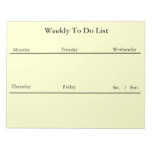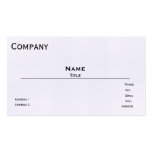Here are three tips for setting your freelance rates, structuring your pricing, and negotiating with clients.
Setting Your Freelance Rate
Pricing the service you provide as a freelancer isn’t easy and is influenced by several factors:
- What is the going market rate?
- What experience do you have, both in your line of work and in working with clients? Both are a significant part of your value – someone with experience can command higher rates and clients want to know that you are also self-directed and able to work well on your own.
- What rate do you feel comfortable with and will sustain your business?
If you are coming out of full-employment and starting on your own, a good rule of thumb to follow when determining your hourly rate is to:
- Calculate what your annual salary equates to as an hourly rate ($x divide by 52 (work weeks), divide by 40 (week work hours).
- Then mark it up 25-30%. This piece covers both your value and experience, but also takes care of our business costs such as networking, proposal writing, and other administration, not forgetting your self-employment tax obligations and healthcare insurance costs.
Project Rates versus Hourly Rates
Many factors determine whether it’s better to price by the hour or by the project.
For example, if you have a stable relationship with a client and regular work coming in, quoting work by the hour can work in your favor because there is consistency in work flow and therefore cash flow. However, if you are good at what you do and work quickly and efficiently, pricing work by the hour can potentially result in under-cutting your own revenue opportunity – simply because you can get done in one hour what others take three to complete. Of course the flip side is that the client simply loves you because you deliver quality work in less time and at a lower cost than other freelancers might!
Pricing a flat project fee, regardless of the hours involved also has its risks and benefits. If you are working with a new client, you probably need more time to come up to speed on the project and the client’s work methods than you would do with an existing client. In this case, pricing your work on a project basis can give you the wiggle room you need to research and produce quality work. It also gives the client the benefit of knowing they are working with a fixed cost. However, this can play against you if “project creep” rears its head and you find yourself putting in more hours than you originally anticipated, essentially cutting your profit margin.
A good rule of thumb is to price your work with some structure built-in that clearly lays out the scope of what you will deliver. For example, if you are a freelance copywriter and a client wants you to price out the cost of researching and writing a product brochure, you might structure your pricing proposal as follows:
- Research: 2 Hours
- Produce First Draft: 4 Hours
- Incorporate Edits and Produce Second Draft: 2 Hours
- Incorporate Final Edits and Produce Final Copy: 1 Hour
- Total : 7 Hours @ $x hourly rate = $x
Use your normal hourly rate to calculate the flat project fee and only state how many hours each stage of work will take if the client asks for it. By putting some parameters around the project, the client can agree to a clear scope of work at a fixed price.
If you are presenting this type of project-based pricing, be sure to add a caveat that any work done over and above this scope of work will be charged at an hourly rate.
Negotiating Your Rate
Negotiation your rate with a new client is always tricky. There often comes a perception that freelance services come at a low rate, and economic factors invariably mean that clients will try to negotiate you down – whatever number you put on the table.
If you value the new relationship and the opportunity that the work brings, always be open to negotiation. If your client counter-offers your rate but you still feel that it is too low for you to compromise your time and your perceived value, try to stand your ground (if you just accept the lower rate you will always feel that you had to compromise yourself, not to mention how hard it will be to re-negotiate a rate-hike down the line). If the client won’t budge, consider potential compromises – if you are a writer, could you write a shorter, less well researched piece at a rate slightly above what the client proposes. That way you maintain your cost-efficiency with the potential for more work down the line.
Alternatively try to agree to a “ramp-up fee” that gives you a chance to come up-to-speed on the project and the client’s product or service. This can sweeten the deal for you, especially if this is a client who you have no pre-existing relationship with, and who you otherwise might turn away.
Once you have built a foundation of work and decide that this is a client you want to continue to do business with, you may want to negotiate a long-term rate that is a little less than your advertised rate. BUT – only go this route if you think your new client is able to provide you with a solid pipeline of future work.
Remember, freelancers can go for long periods without work and quite often, swapping less work at a higher rate for consistent hours at a lower rate can make good business sense.








No comments:
Post a Comment